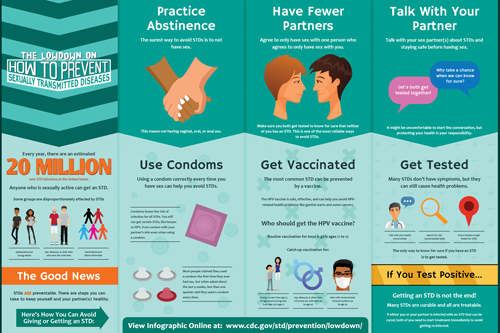STD Prevention Infographics
Expedited Partner Therapy (EPT): An Important STD Prevention Tool
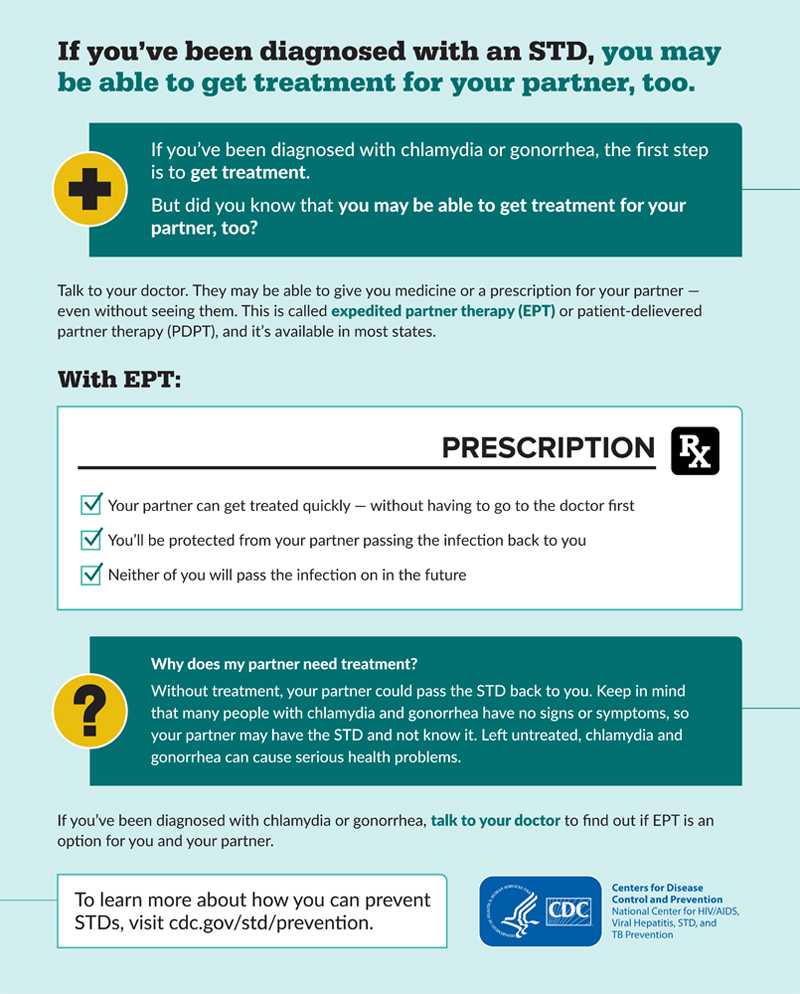
Download as a PDF, or
copy the code below to share as an image.
Antibiotic-Resistant Gonorrhea: It's Time to Take Action
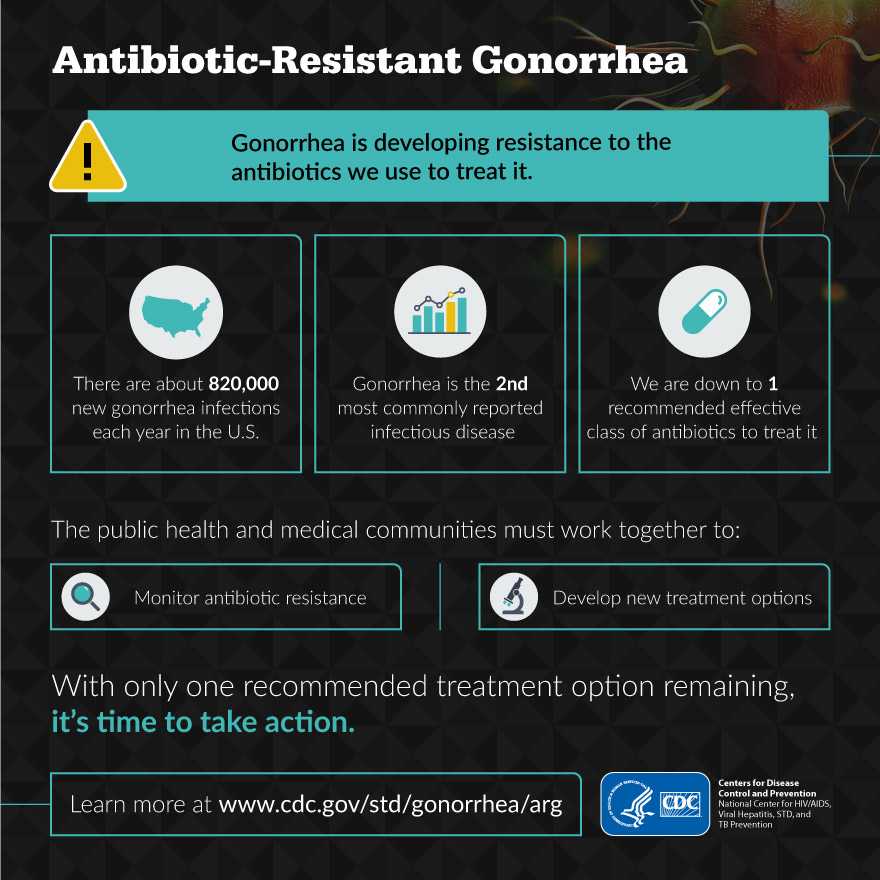
use the code below to share this image.
Antibiotic-Resistant Gonorrhea: Health Care Providers
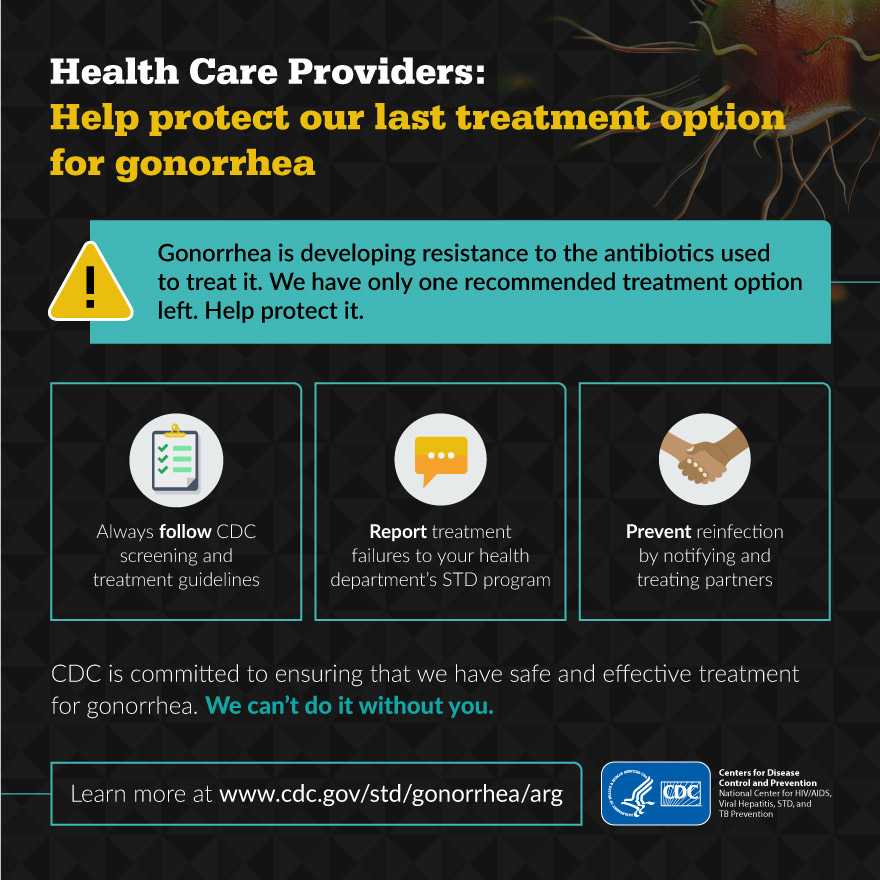
use the code below to share this image.
Antibiotic-Resistant Gonorrhea: Working Together
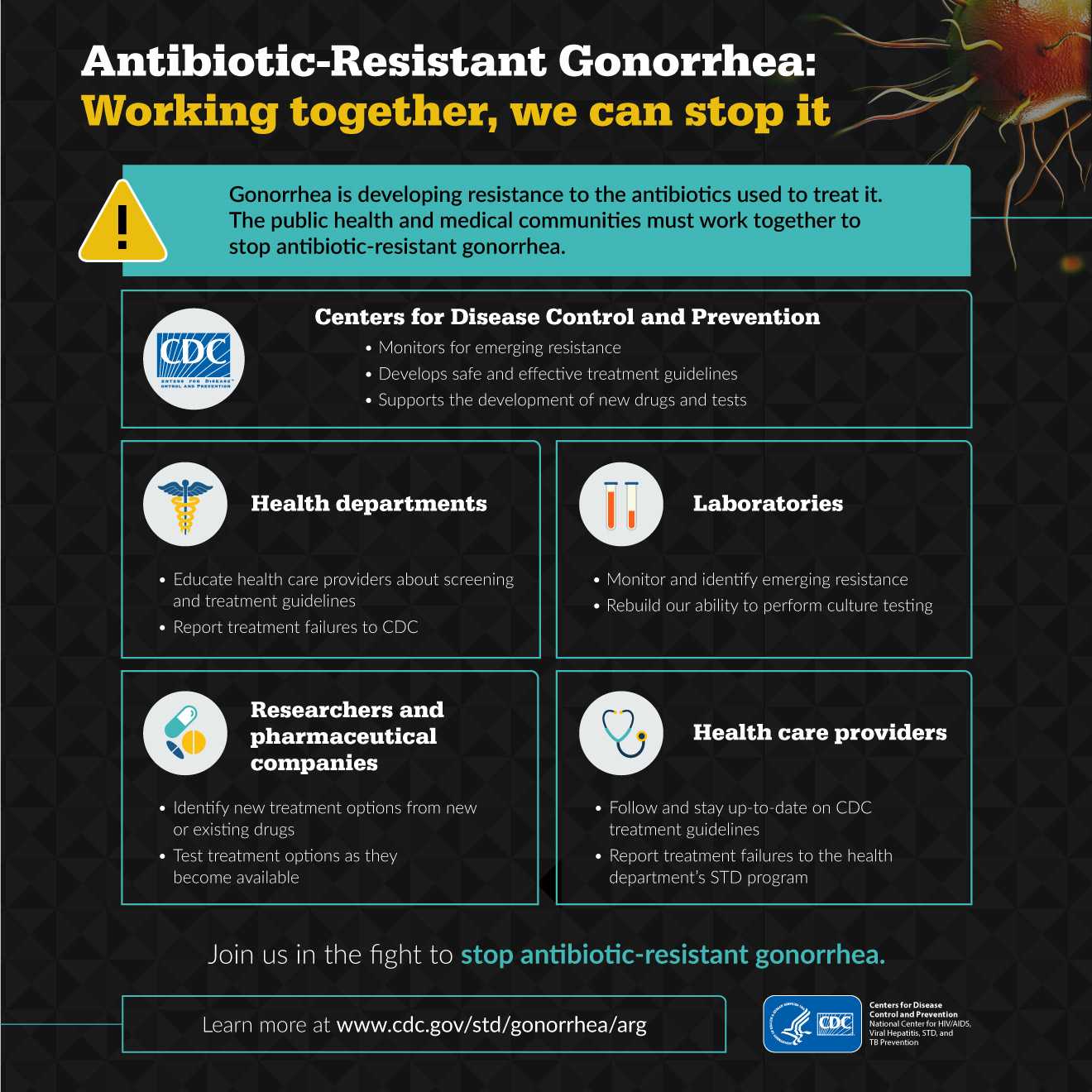
use the code below to share this image.
Sexually Transmitted Infections among Young Americans
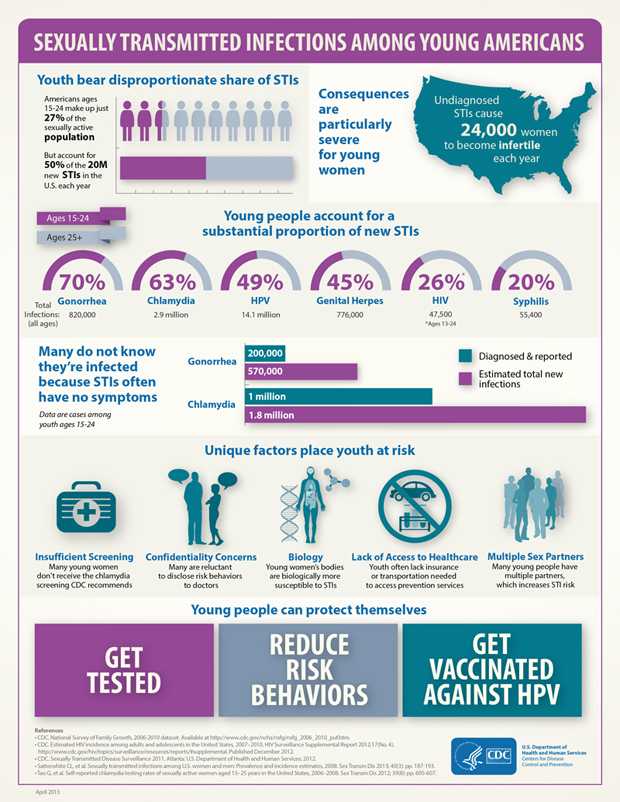
While sexually transmitted diseases affect individuals of all ages, STDs take a particularly heavy toll on young people. CDC estimates that youth ages 15-24 make up just over one-quarter of the sexually active population, but account for half of the 20 million new sexually transmitted infections that occur in the United States each year. This infographic highlights the impact, causes, and consequences of STDs among young people – and what they can do to protect themselves.
Use the code below to share this image.
Youth Bear Disproportionate Share of STIs - 1114x530
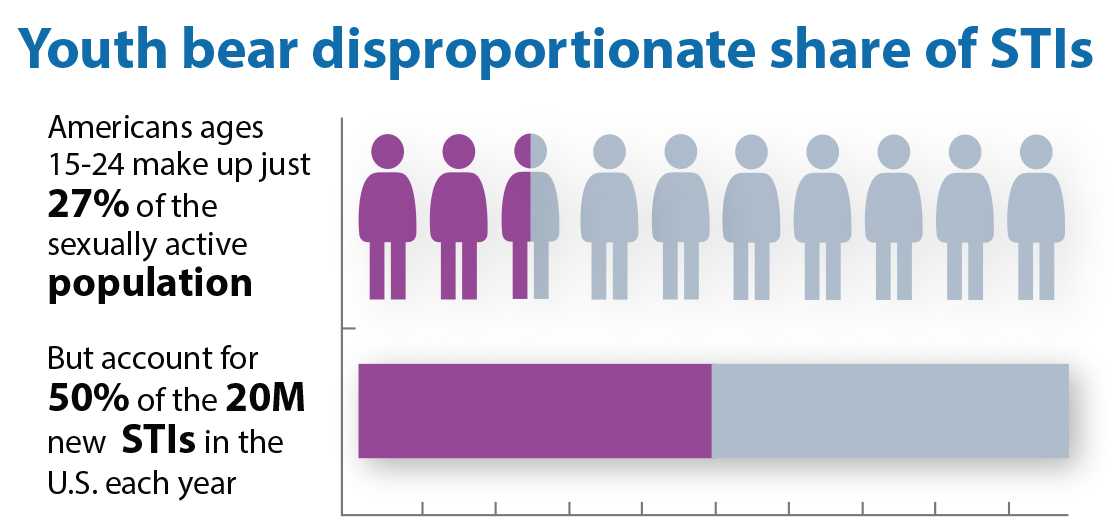
Use the code below to share this image.
The Consequences of STIs are Particularly Severe for Young Women - 1214x591
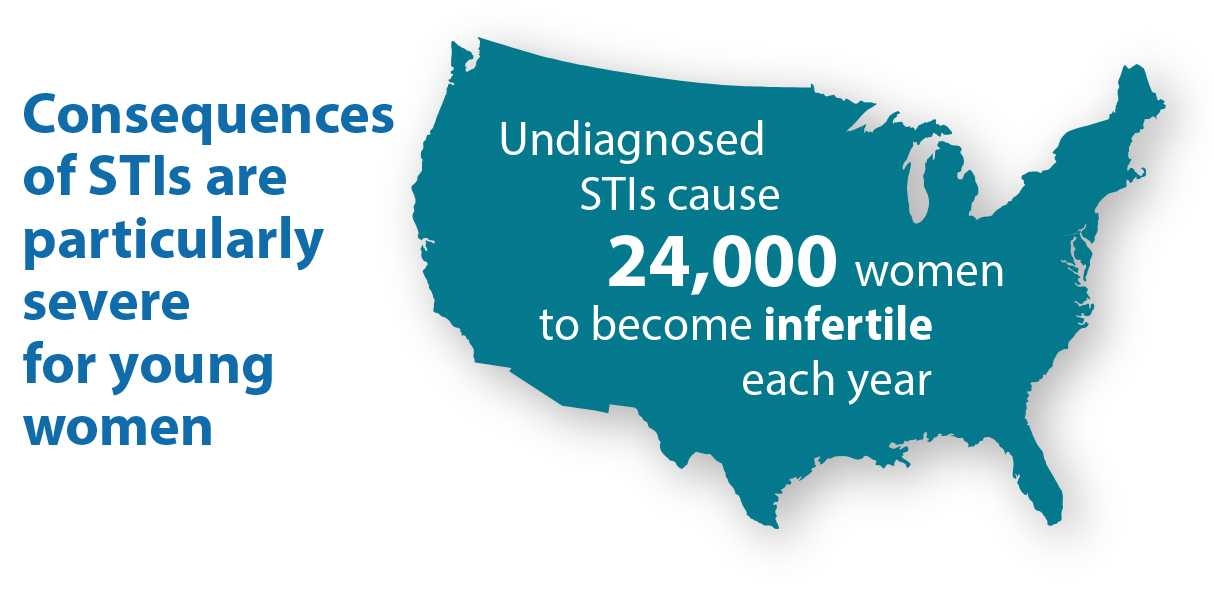
Use the code below to share this image.
Young people account for a substantial proportion of new STIs - 1240x290

Use the code below to share this image.
Unique Factors Place Youth at Risk for STIs - 2298x629

Use the code below to share this image.
Young People Can Protect Themselves from STIs - 2365x562

Use the code below to share this image.
Estimated New STIs (Ages 15-24 and Ages 25+) - 760x580
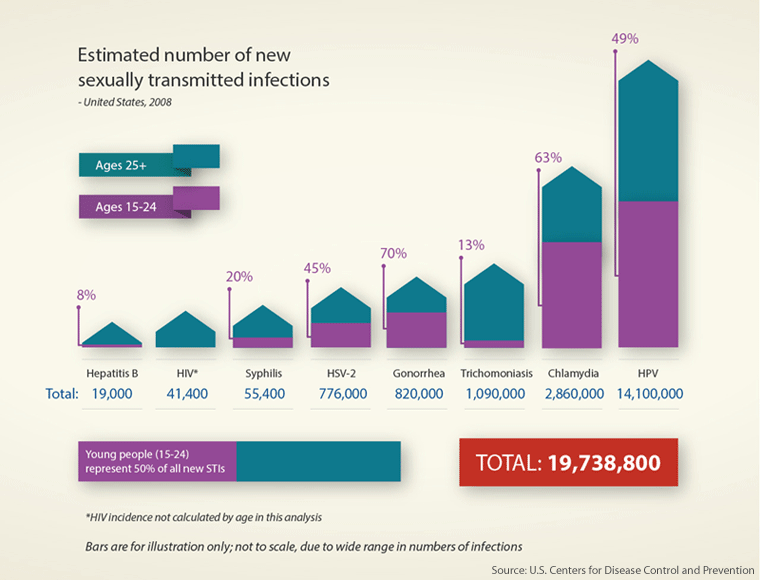
Use the code below to share this image.
Estimated New and Existing STIs with Gender Totals - 760x558
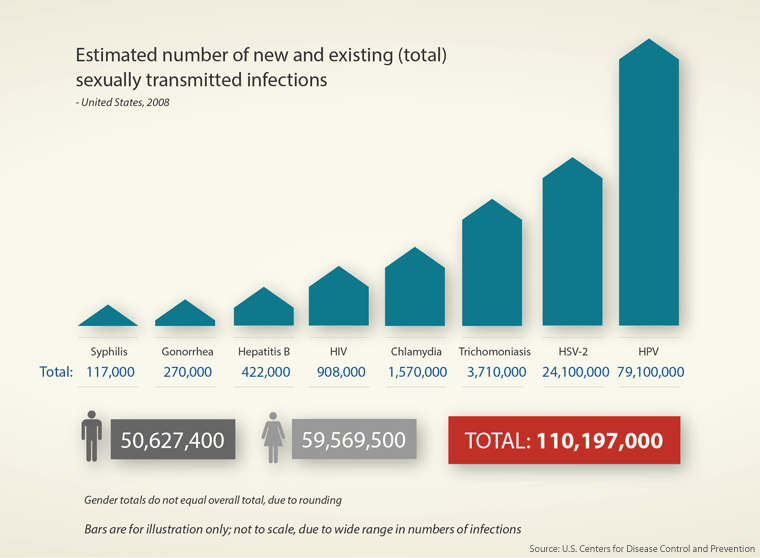
Use the code below to share this image.
STI Estimates and Medical Costs - 300x409

Use the code below to share this image.
- Page last reviewed: December 10, 2015
- Page last updated: March 28, 2013
- Content source:


 ShareCompartir
ShareCompartir
